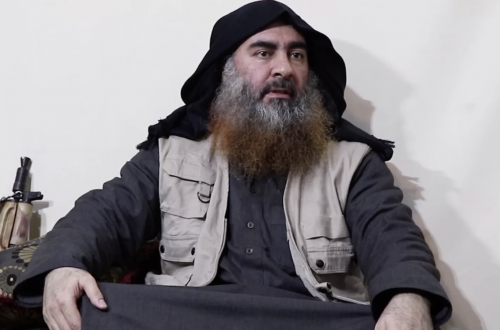This is a guest post by Eyal
This is the first part of a 2-part series. The 2nd part will be published later this week.
As attacks by the Syrian government against its own people continue to intensify, so have calls for military intervention against the regime. Just this week, top Pentagon officials have hinted at the subject, and France is set to propose invoking Chapter 7 of the UN Charter against Syria. However, most of the discussion thus far has been on whether such intervention is justified, and not enough has been said of immense obstacles to such action.
Compared to other countries where military and/or humanitarian intervention was taken by the West, Syria is uniquely qualified to oppose such intervention, both in terms of direct military opposition, as well as potential in-direct retaliation in other arenas. This is why, in my opinion, military intervention in Syria is a whole different ball game than anything previously encountered by the West in the past 20 years.
Before we begin – two words of caution:
- This isn’t a discussion of the moral merits for or against such intervention, but rather an analysis of the challenges of such action.
- I am not an expert. I consider myself to be a well-informed layman, and I have done some research for the purposes of this post. However, if there are any readers who feel that they are better informed than I am – feel free to write them up in the comments below.
For the most part, humanitarian intervention missions by the West usually follow a familiar pattern: aerial bombings designed to break the target country’s military capabilities and/or beat the ruling regime into submission, with limited ground forces that usually move-in only after the aerial campaign has ended. With slight variations, this model was used in intervention missions in Serbia/Bosnia (1995), Serbia/Kosovo (1999), the Iraqi No-Fly Zone (between 1991 and 2003), Libya (2011), as well as in the wars in Iraq and Afghanistan (where the aerial campaign was followed by a ground invasion).
The benefits of such modus operandi are two-fold: first, it leverages the West’s overwhelming air superiority against weaker countries, and secondly, it allows Western countries to conduct relatively quick operations and avoid the costs and casualties associated with extensive ground action (again, with the exception of the full-fledged wars in Iraq and Afghanistan). In either case, air supremacy is the foundation of any military action.
But whereas Serbia, Libya, Afghanistan, and Iraq had no meaningful aerial defenses to begin with, Syria has been building for over 40 years its defense capabilities with the single purpose of fighting off an advanced Western air-power – Israel. Syrian defenses are comprised of two complementary arms: massive anti-air craft missile defenses to curtail any attack, and extensive offensive ballistic missile capabilities, designed to hit Israel’s home-front without having to engage it on the battlefield. The first part of this post will deal with Syrian air-defenses.
The roots of Syria’s love affair with anti-air missiles lie in the defeat of the Six Day War, when the Israeli Air Force destroyed all Arab air forces within a matter of hours, and enjoyed air supremacy for the remainder of the war. In the aftermath of that war, both Syria and Egypt began purchasing large quantities of Soviet SAM batteries, which wrecked havoc on the IAF just a few years later, in the Yom Kippur War in 1973. The IAF lost over 100 planes in the war, 90% of which were brought down by anti-aircraft missiles.
In the next round of fighting, however, during the 1982 Lebanon War, the IAF learned from its past mistakes and dealt the Syrian air force a decisive blow. Within a matter of days, it shot down 82 air planes and destroyed 19 missile batteries, without losing a single airplane. Since then, Syria has abandoned nearly completely its air power, and instead began focusing almost exclusively on anti-aircraft missile defenses.
Current public estimates are that Syria has around 40,000 air-defense personnel, 20-25 radar sites, around 150 missile batteries and 4,000 anti-aircraft guns. These batteries are deployed mostly around Damascus, with additional lines of defenses along the coastline and along the mountains.
Approximately 70-80 of Syrian batteries are the older SA-2 and SA-3 batteries, and another 50-60 are the slightly newer SA-5 and SA-6 batteries. However, in recent years Syria has been investing massively in its defense systems. According to Israel’s deputy chief of staff, Syria spent $3 billion in recent years on anti-aircraft missiles. Reportedly it has acquired 30-50 batteries of advanced Pantsyr-S1 (SA-22) and BUK-M2 (SA-11) missiles. In addition, there have been unconfirmed reports that it has recently acquired Russian S-300, considered to be one of the most advanced air-defense systems in the world.
The effectiveness of this missile arsenal is something for discussion. On paper, Syria possesses massive and robust air defense capabilities. However, the backbone of its aerial defense system are the older SA-2, SA-3, and SA-6 systems, designed in the 1960’s and 70’s, which posses only single-target engagement capability (meaning they can track only one target at a time). This leaves the system vulnerable to saturation, using multiple planes at once.
Moreover, history has shown that a determined, advanced Western air-power is quite capable to deal with Syrian defenses. During the 1982 war, Israel was able to destroy 19 SAM batteries in the space of 4 days, without losing a single jet. More recently, Israeli planes were able to bomb a Syrian nuclear facility and escape without even being detected. This suggests that at the very least Israel (and probably other Western countries, as well) has at least limited capabilities for dealing with Syrian air-defenses.
Nonetheless, the breadth and scope of Syria’s air defenses represent a challenge unlike anything the West has seen for many years, especially considering the newer systems being supplied by Russia. Senior Israeli military officials have said it the past that Syria’s antiaircraft system is the most advanced in the world, and top NATO commanders have already expressed concern at how the proliferation of these systems will affect any potential action.
At the very least Syrian air defenses will complicate and hinder any plans for intervention. At the very worst they will render any such plans completely impossible. In either case, Western airpowers shouldn’t expect the clean and bloodless operations of the past.
A bigger concern, in my opinion, is Syria’s ballistic missile systems, and how they might be used against any attackers or its neighbors. This will be the subject of the next post.


